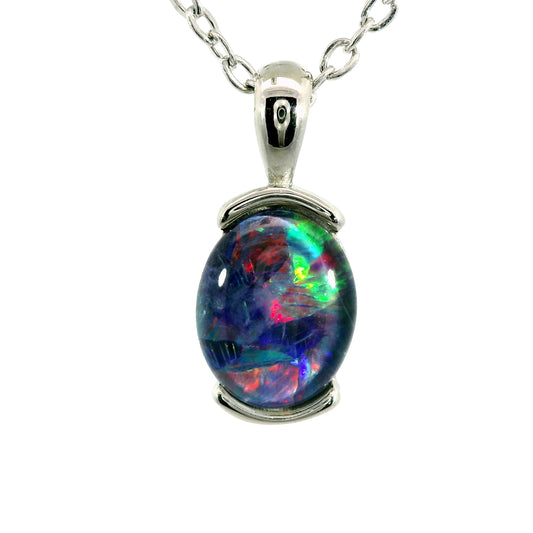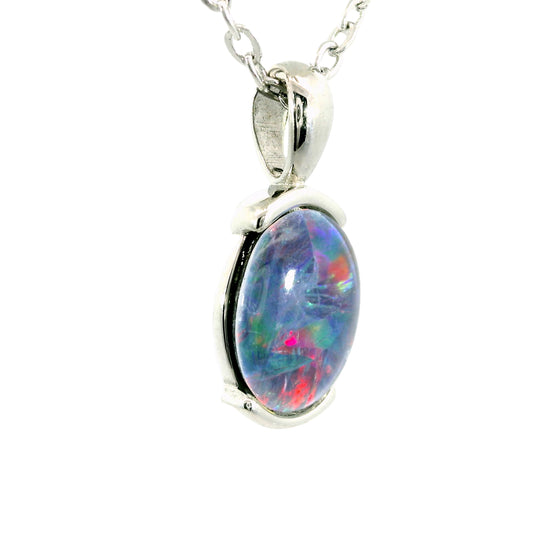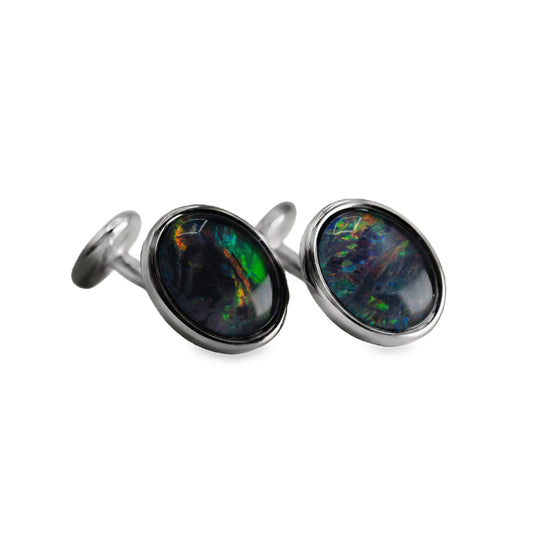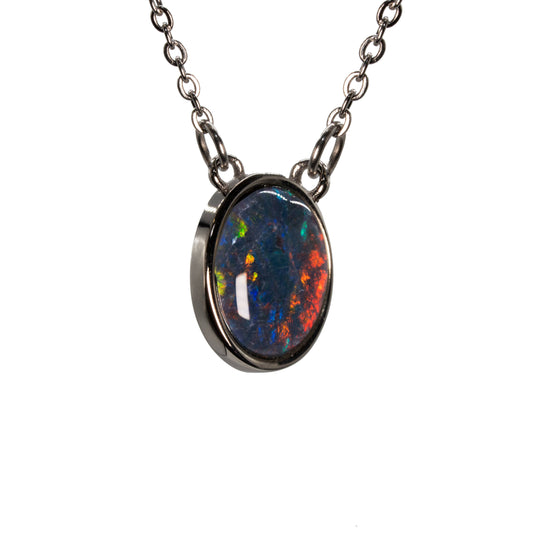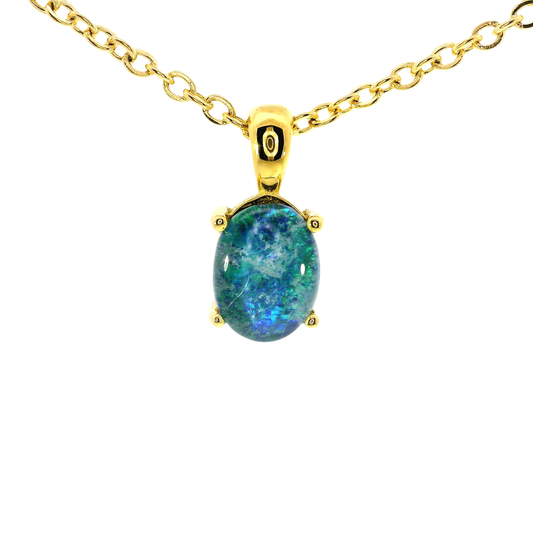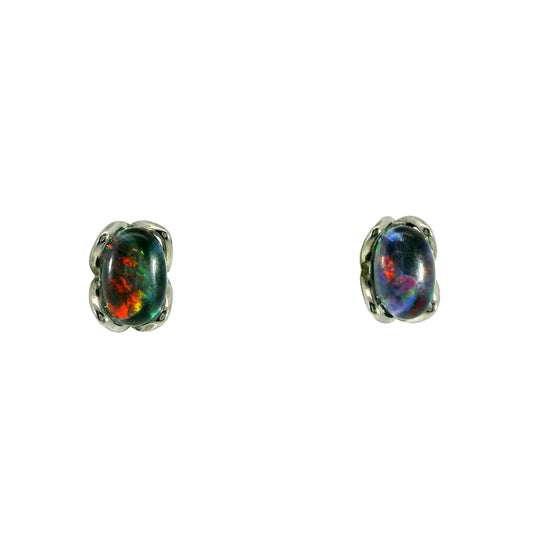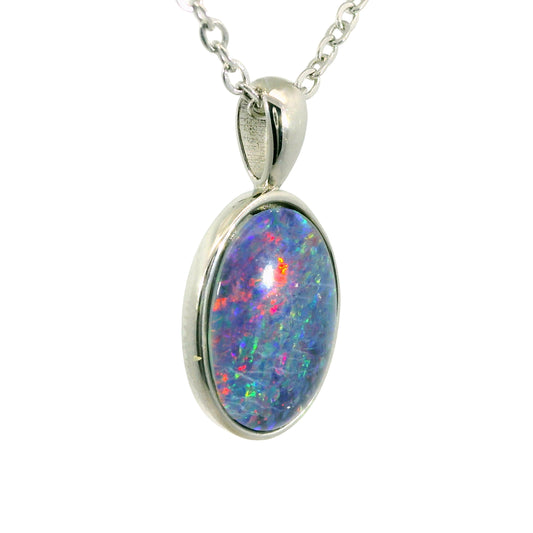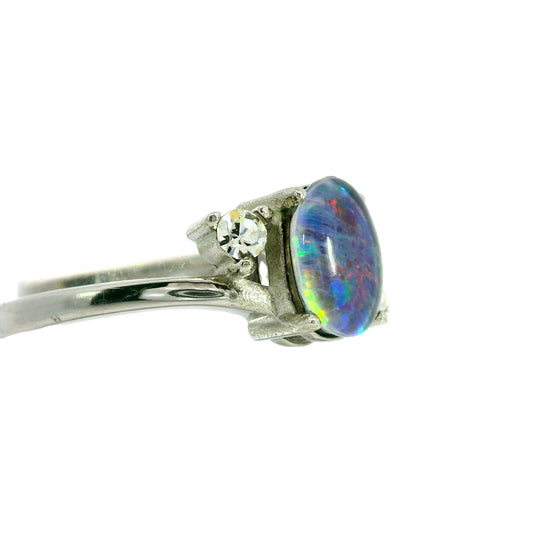Superstitions Behind the Rainbow Gem
Superstitions have been heavily ingrained into society for centuries, regardless of culture. This can revolve around a range of topics and objects, and natural resources have often been viewed as the source of good and bad luck. One stone in particular has been given an unfair reputation. Opal gemstones have been treasured for centuries for their unique beauty and stunning play of colour. Found in ancient opal rings and pendants, these stones have been the hallmark of wealth and prosperity.
However, throughout history, there have been various beliefs and superstitions surrounding these precious stones. But are opals bad luck? Are opals good luck? Or are they irrelevant to superstition entirely? Nevertheless, the mines of Australia are known for producing some of the finest opals in the world, including black opals, which are highly valued by collectors and jewellery enthusiasts alike, regardless of the luck fortune they may deliver their wearer.
Opals In History
 Throughout history, opal has had intricate stories and lore, both positive and negative, attached to its glimmering form. It was believed that opal - due to the gemstones many vibrant colours - possessed the ‘good virtues’ of other gemstones, and the specific colours shown would directly correlate to the opal's effect on the owner, meaning their opals were deliverers of good luck. This led to things such as opal earrings, opal pendants, or opal rings, becoming more than just opal jewellery, but a shining token of hope and purity.
Throughout history, opal has had intricate stories and lore, both positive and negative, attached to its glimmering form. It was believed that opal - due to the gemstones many vibrant colours - possessed the ‘good virtues’ of other gemstones, and the specific colours shown would directly correlate to the opal's effect on the owner, meaning their opals were deliverers of good luck. This led to things such as opal earrings, opal pendants, or opal rings, becoming more than just opal jewellery, but a shining token of hope and purity.
Greek and Roman Opal History
Such stories began from the ancient Greeks, who believed that the gemstone could bestow powers of prophecy onto its wearer. This created a widespread belief that opals possessed magical qualities, as well as amplifying feelings and desires. Naturally, throughout this period, there were no questions of whether opals were good luck.
The Romans also believed that opals were a rare beauty, and honoured the gemstone second only to emeralds; they considered opals good luck, and it has been documented that Ceaser's gifted the gemstone to their wives and carried the gemstone with them for that very reason; this was also seen in the Middle Ages, where opal stones were seen as a good omen to bring good luck. This positive imagery would soon change, however, and be replaced with a deeply ingrained fear.

Are Opals Bad Luck?
In 1075, an important volume of work named ‘Lapidarium’ referred to opal as ‘patronus furum’, roughly translated to “protector of thieves”. Bishop Marbode of Rennes wrote, in regard to this, “…Yet ’tis the guardian of the thievish race; It gifts the bearer with acutest sight; But clouds all other eyes with thickest night.”. Both the title and this verse offer a distinct insight into nuances surrounding opal. The passage written by Bishop Marbode claims that opal has magical capabilities of invisibility, however, the negative association with thieves’ and trickery leads the audience to believe that an opal's power is inherently destructive to society, and therefore should not be trusted. Hence, questions of whether opals are bad luck begun to spread.

There was a distinct time within history when opals were strongly associated with the Black Plague, bringing a sense of misfortune that was associated with death and loss. In his book, The World of Opals, Alan W. Eckert makes reference to the blame placed on opal during the Bubonic Plague, saying: “the notion is not so outlandish as one might believe today; those experiencing this harrowing time soon notice that an opal worn by a victim is quite brilliant up to the point of death, but then it quickly loses much of its brilliance...”
Here we can see that the colours of an opal and its vibrancy were seen as a bad omen, and were viewed as a direct representation of the owner's health. He continues, “They deem this to be evidence of the opal having malignant influence on the victims gate, and do not understand that it is the demise of the victim that alters the stone.” Even with his denial, there is still seen to be a link between humans and stone, an interesting concept; he attributes the connection to a more scientific explanation, stating that “the relatively rapid change from the warmth of the fever the victim was experiencing to the chill of death” was to blame for the changes seen within the gemstone. Scientifically, when opal is exposed to dramatic temperatures - enough to evaporate water - the appearance of the stone will change accordingly; this means that things such as humidity, heat, and body temperature could in fact impact the natural colour of the stone! Finally, Eckert states the reasoning for the opals tarnished reputation: “Through to this time opal has always been a highly favoured gemstone with european jewellerys, following the plague they regard it as a badge of dread.”

Opals In The Late 19th Century
Public perception of opal within the 1890s was significantly impacted by literature. Superstitions regarding opals and their effects on their owners were detrimental to the gemstones reputation, and are mainly due to a novel written by Sir Walter Scott: Anne of Geierstein (1892). Currently, many people tie the majority of beliefs regarding an opal ‘bad luck’ regarding Sir Walter’s work, citing that there is “little evidence” that such superstitions were common before the 1850s; a brief reading of the novel will depict opal in a negative light, as it is seen to be the source of a characters downfall.
|
“But she wore no turban or head−dress of any kind, saving a blue ribbon drawn through her auburn hair, and secured by a gold clasp, the outer side of which was ornamented by a superb opal, which, amid the changing lights peculiar to that gem, displayed, internally a slight tinge of red like a spark of fire.” - Description of the opal from Anne of Geierstein |
In Sir Walters novel, Lady Hermine is accused of being a demoness. She wears an opal that, when touched by holy water, becomes dulled and causes her death, in which the opal “shot out a brilliant spark like a failing star, and became the  instant afterwards lightless and colorless as a common pebble, while the beautiful Baroness sunk on the floor of the chapel with a deep sigh of pain...”. Although the novel doesn’t depict the gemstone having a negative effect, the overall association is what lead to an uprising of fear. Regardless of how it depicted opal, this novel still had an impact on the way opal was viewed.
instant afterwards lightless and colorless as a common pebble, while the beautiful Baroness sunk on the floor of the chapel with a deep sigh of pain...”. Although the novel doesn’t depict the gemstone having a negative effect, the overall association is what lead to an uprising of fear. Regardless of how it depicted opal, this novel still had an impact on the way opal was viewed.
Opal pendants and earrings saw a significant drop in sales within only a year of this novel being published, with opal as a gemstone now being tarnished with a unfavorable association. In addition to this, the opals reputation of ‘bad luck’ could be seen in a string misunderstanding of how to handle the gemstone. Some individuals, when handelling their opal pendants or rigns, would see that the opal broke when polished or cut; such a thing was widely considered bad luck, leading to a decline in opal’s use in jewellery. Because of these factors, the opal market within Europe is believed to have dwindled for almost 50 years, causing the gemstone to be unprofitable.
Are Opals Good Luck - Opals In Recent History
Queen Victoria helped to negate the stigma surrounding opal, as she was known to wear the gemstone during her reign. She blatantly ignored any and all superstitions of the time, wearing the gemstone often and gifting it to other royals. Due to her high status, it did not take long for opals - in addition to the act of wearing them - to be considered fortunate and loved by many. This, unsurprisingly, led to a soaring demand within Europe, and paved the way for successful mining endeavours for black opal within Lightning Ridge, in Australia around 1877.
superstitions of the time, wearing the gemstone often and gifting it to other royals. Due to her high status, it did not take long for opals - in addition to the act of wearing them - to be considered fortunate and loved by many. This, unsurprisingly, led to a soaring demand within Europe, and paved the way for successful mining endeavours for black opal within Lightning Ridge, in Australia around 1877.
In some cultures, opals are believed to have healing properties and are used as a natural remedy for various ailments. For example, in ancient Rome, opals were thought to have healing powers and were used to treat eye diseases. In Aboriginal culture, opals are believed to have spiritual properties and are used in traditional ceremonies and rituals. Opals are also believed to bring good luck and fortune to their owners. In ancient times, opals were considered a symbol of hope and purity and were thought to bring good luck and protection to those who wore them. Today, many people still believe that wearing opal jewellery can bring good fortune and positive energy into their lives.
Opals In The Modern Era
Although opal has found love and appreciation within the modern era, there is still speculation about its importance and belonging within important ceremonies, such as engagements and weddings. Many people are still hesitant to purchase such a gemstone after they hear about the ‘bad luck’ and rituals associated with it, especially when things contradict. For example, some say that it is bad luck to gift and opal, meaning it should only be bought for individual use, however, others say the opposite: it is bad luck to buy an opal for yourself, and that it should only be gifted! Many things like this are what create mental roadblocks, meaning that those seeking engagement rings often do not see opal as a good contender, which is a shame, as the gemstone is vibrant, with spectacular colour.
Opals as a whole have both an intricate and confusing history, with humans attempting to explain their brilliant colour through the element of supernatural prowess. The folklore and stories regarding this gemstone vary greatly, with the negative stigma and superstitions still clouding judgment in the modern day. It is important to not distinguish an opal's value based on superstitious beliefs, but rather, what you place on the gemstone. Opals are a beautiful accessory - especially with the current variety of available opal rings, pendants, and earrings - and only the person who wears one can distinguish what it represents.
The Lucky Gem from the Lucky Country from Australian Opal Cutters on Vimeo.












































































































